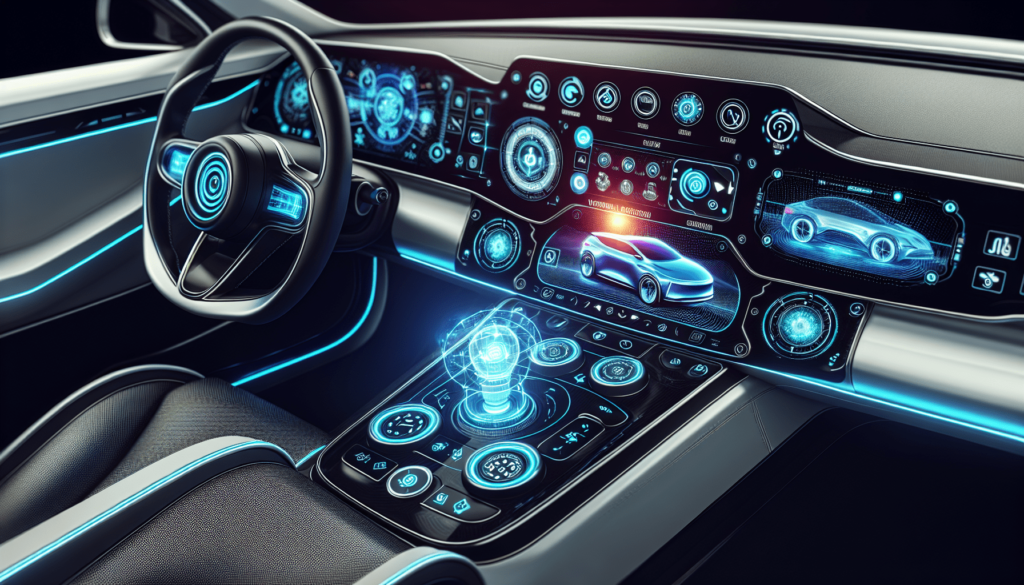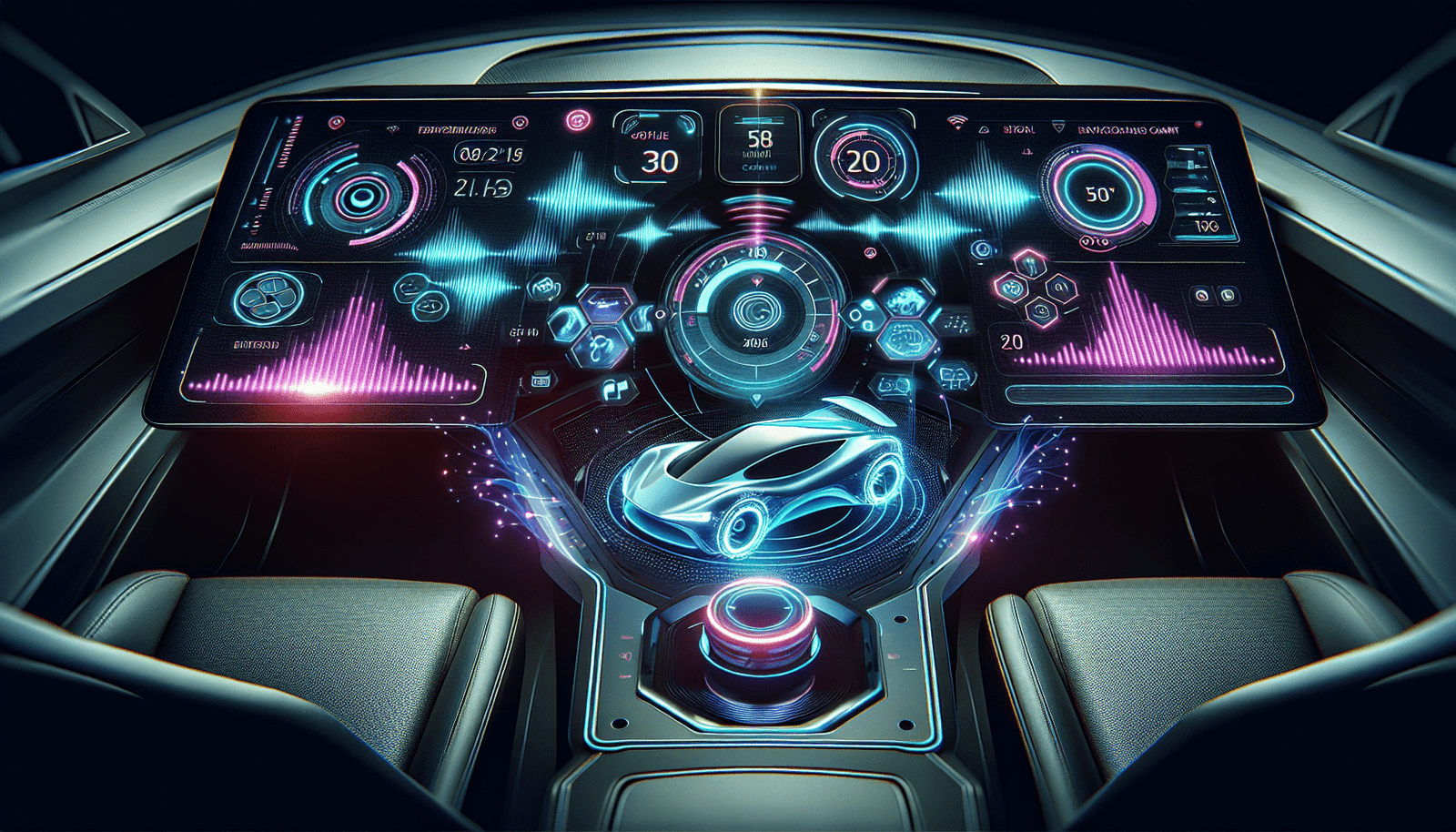In the realm of electric vehicles, a vibrant wave of innovative user interfaces is sweeping the market. From sleek touch screens to augmented reality displays, advancements in electric vehicle user interfaces are fueling excitement and transforming the way we interact with our cars. These cutting-edge technologies bring a new level of convenience, intuitiveness, and connectivity to the driver’s experience, making electric vehicle ownership even more enticing. So, let’s take a closer look at the emerging innovations that are revolutionizing electric vehicle user interfaces.

Voice Control Systems
Voice control systems in electric vehicle user interfaces have significantly improved over the years with advancements in voice recognition technology. This technology allows drivers to control various functions of their vehicles through voice commands, providing a convenient and hands-free operation. With the integration of virtual assistants like Amazon’s Alexa or Apple’s Siri, the voice control system becomes even more powerful and versatile. By simply speaking commands, drivers can adjust the temperature, change the music, make phone calls, or even navigate to a specific destination without ever taking their hands off the steering wheel. This not only enhances the overall driving experience but also promotes safer driving by reducing distractions on the road.
Gesture Control
Another emerging innovation in electric vehicle user interfaces is gesture control. This feature allows drivers to interact with their vehicles by using hand or body movements, making it a more intuitive and convenient way to operate various functions. For example, a simple swipe of the hand can adjust the volume of the music, a pinch gesture can zoom in on the navigation map, and a wave can answer or reject a call. By employing gesture control, drivers can maintain their focus on the road while still being able to control their vehicle’s features effortlessly. This innovation enhances the overall driving experience by reducing distraction and increasing convenience.
Biometric Authentication
As technology continues to advance, biometric authentication has become a prominent feature in electric vehicle user interfaces. Fingerprint or facial recognition allows for secure access to the vehicle, replacing traditional keys or key fobs. By registering their biometric data, drivers can easily unlock their vehicles without the need for physical keys. Additionally, biometric authentication enables customizable user profiles with personalized settings. Each driver can have their own profile, which adjusts the seat position, mirrors, and even entertainment preferences according to their biometric data. This not only enhances security and protection against theft but also provides a more personalized and comfortable driving experience for each driver.
Augmented Reality HUD
Augmented reality heads-up display (HUD) is a cutting-edge innovation that projects a display onto the windshield or directly into the driver’s field of view. This display overlays real-time information such as navigation directions, speed, and power consumption onto the driver’s view of the road, significantly improving driver awareness. By eliminating the need to look down at dashboard instruments or navigation screens, the augmented reality HUD reduces distractions and allows drivers to keep their eyes on the road at all times. This innovation enhances the driving experience by providing crucial information in a non-intrusive manner and increasing overall safety.

Intuitive Touchscreen Displays
Electric vehicle user interfaces have embraced touchscreen displays as a primary mode of interaction with the vehicle’s features. These displays are designed to be responsive and user-friendly, featuring intelligent layouts and organizations of functions. By having a customizable interface, drivers are afforded the opportunity to arrange functions according to their preferences, ensuring a personalized and user-centric experience. Whether it’s adjusting the climate control, selecting a music playlist, or accessing vehicle settings, the intuitive touchscreen displays make it easy for drivers to access and control various aspects of their electric vehicles.
Advanced Navigation Systems
Advanced navigation systems have become an essential component of electric vehicle user interfaces. These systems integrate real-time traffic data, allowing drivers to choose the most efficient routes and avoid congested areas. Moreover, electric vehicle-specific navigation features such as range calculations and the identification of nearby charging stations are available, providing drivers with accurate information regarding their battery range and available charging options along their route. With smart routing capabilities that consider charging station availability, drivers can plan their journeys with confidence, ensuring a seamless and efficient driving experience.
Mobile App Integration
The integration of mobile apps into electric vehicle user interfaces has revolutionized the way drivers interact with their vehicles. These apps provide remote control and monitoring functionalities, allowing drivers to stay connected to their vehicles even when they are away. By using their smartphones, drivers can check the battery charge status, review charging history, and obtain range estimations, providing them with essential information for planning their journeys. Additionally, scheduling charging sessions and pre-conditioning the cabin can be done through these apps, enabling drivers to optimize their vehicle’s performance and comfort before hitting the road. Mobile app integration enhances convenience and adds a new level of connectivity and control for electric vehicle drivers.
Intelligent Voice Assistance
Intelligent voice assistance has become an integral part of electric vehicle user interfaces, offering natural language processing capabilities for more conversational interactions. These voice assistants have in-depth knowledge of EV-related information and services, allowing drivers to ask questions, receive answers, and get guidance on various aspects of their vehicles. From providing information on charging station locations to answering inquiries about energy consumption and vehicle performance, intelligent voice assistance helps drivers make informed decisions and simplifies their overall experience. Voice-guided tutorials and assistance are also available, making it easier for new users to navigate and understand the functionalities of their electric vehicles.
Vehicle-to-Home Integration
Electric vehicle user interfaces are now integrating vehicle-to-home capabilities, enabling bidirectional charging. This functionality allows electric vehicles to power homes during outages or high-demand periods, providing a reliable backup power source. Additionally, energy management and optimization features are included, allowing drivers to control how and when their vehicles charge and discharge energy. Integrating electric vehicles with smart home systems ensures a seamless and efficient use of energy, contributing to overall sustainability and offering drivers added flexibility and control over their energy consumption.
Virtual Cockpit Displays
Virtual cockpit displays replace traditional instrument clusters with large, high-resolution screens that offer customizable layouts and information display. These displays provide drivers with real-time information such as speed, battery range, and energy consumption in a visually appealing and easy-to-read format. Moreover, virtual cockpit displays integrate with other interfaces within the vehicle’s user interface, creating a holistic and immersive user experience. Whether it’s accessing media controls, navigation guidance, or vehicle status information, virtual cockpit displays enhance the overall aesthetic appeal and functionality of electric vehicle user interfaces.
In conclusion, electric vehicle user interfaces are constantly evolving, with numerous innovations emerging to improve the overall driving experience. Voice control systems, gesture control, biometric authentication, augmented reality HUD, intuitive touchscreen displays, advanced navigation systems, mobile app integration, intelligent voice assistance, vehicle-to-home integration, and virtual cockpit displays are among the cutting-edge technologies that are transforming the way drivers interact with their electric vehicles. These innovations aim to enhance convenience, safety, security, and personalization, ensuring that every driver enjoys a seamless and enjoyable driving experience. As technology continues to advance, electric vehicle user interfaces will continue to evolve, setting new standards for usability, connectivity, and functionality in the realm of electric mobility.

